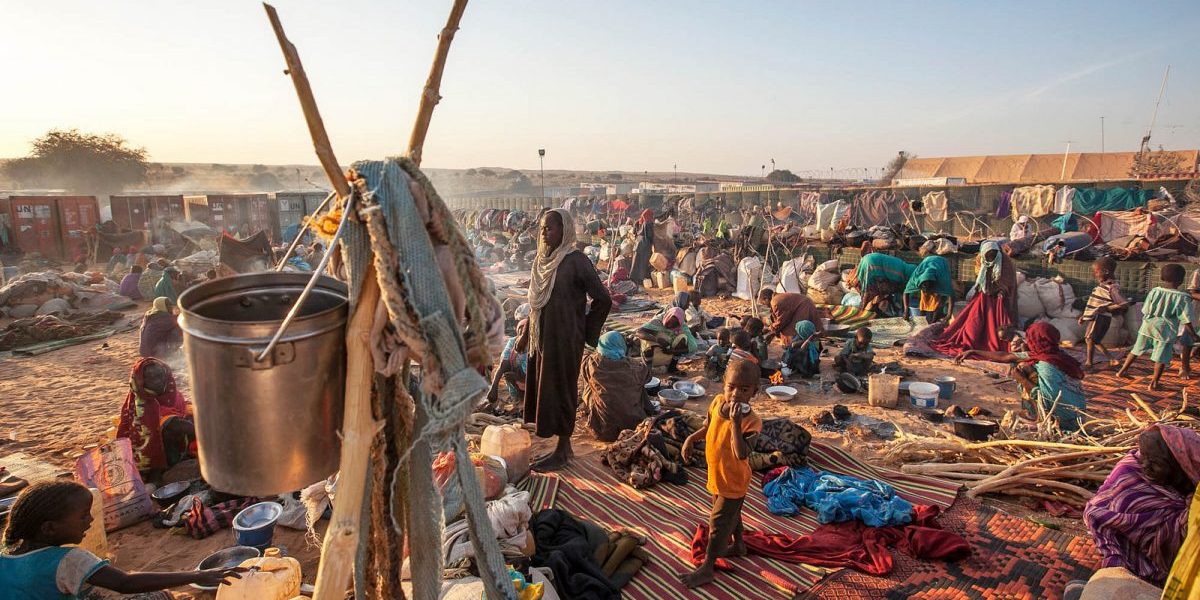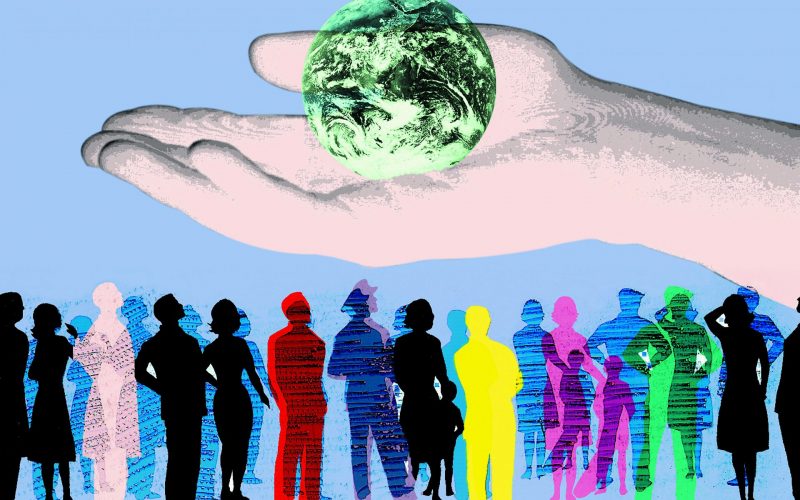She made her way first to Juba, the largest city in the south, and eventually on to Khartoum, the capital, where she resettled. Displaced once by war, she is now losing her home again – this time, it appears, because of peace.
Sudan is a land of twin crises and twin peace processes. To the west is Darfur, the vast western desert expanse where government-backed militias are sacking village after village. To the south are the battlegrounds of a 21-year civil war with between the Khartoum regime and Christian and animist separatists.
Nigeria is playing host to government and rebel forces entangled in Darfur. Kenya has facilitated talks between Khartoum and its rivals in the south. As those latter talks move haltingly forward, the government has begun bull-dozing several camps ringing the capital and surrounding areas where an estimated 2 million internally displaced Sudanese have resettled over the past two decades.
Town Planning
Officials say the move is part of a larger strategy to improve living conditions. Khartoum has promised to provide new plots for residents as well as vital services such as electricity and water.
But critics quietly claim that the real motive is to force the residents – most of whom fled fighting – to return to their homelands after a peace agreement is reached. Over the past year and a half, they note, the government has been systematically demolishing homes, schools, clinics and latrines, leaving a muddy trail of disease and misery in its wake. The promised plots, meanwhile, remain too expensive for even those residents who have jobs.
‘We are here in a shanty town now, my dear sister, we can’t even say we’re in a camp,’ said Paula, a 38-year-old resident of El Salaam, a camp in Omdurman to the north of Khartoum, where she also works as a nutritionist for a local Sudanese nongovernmental organization. She requested that her surname be withheld. She said she was informed on 6 June that her home would be destroyed nine days later. It was. ‘This is not a place for human beings. Maybe for goats and rats.’
The humanitarian crisis in Darfur captured the attention of foreign diplomats, relief workers and journalists who pass regularly through Khartoum these days. The destruction of the camps, meanwhile, goes largely unnoticed.
A narrow bridge across the White Nile leads to Omdurman, a city just north of Khartoum whose religious ruler, the Mahdi, was toppled by the Anglo-Egyptian army of Lord Kitchener in 1898. In 1992, El Salaam camp was founded down the road from the Mahdi’s tomb. Visiting foreigners flock to the site on Friday afternoons to watch whirling dervishes dance.
Gaping holes
Despite its name, there is nothing peaceful about El Salaam camp. The 120,000 internally displaced persons who live there have nicknamed the place ‘Jaborona’, which roughly means ‘to force someone to do something against his will.’ Touring her demolished neighbourhood, Paula points to piles of dirt that once formed her house and the local school. The government has destroyed thousands of homes in here since mid-2003, leaving gaping, putrid holes where latrines once stood and forcing residents to erect feeble makeshift dwellings that provide little shelter. Diarrhoea and malaria are on the increase.
‘Luckily there hasn’t been any serious mortality yet,’ said a Sudanese official for a nongovernmental agency in Khartoum, who preferred to remain anonymous due to the sensitivity of his agency’s work in the El Salaam camp. ‘But disease is certainly on the increase, particularly public health-related disease. Families have no homes and are getting infections, particularly children.’
It is the same story in Wad Bashir, a camp neighbouring El Salaam where another 74,000 people dwell. Demolitions are ongoing also in two other official camps in Khartoum, where some 2,000 to 2,400 homes have been flattened, and throughout the roughly 15 squatter camps where the displaced have settled.
The international community predicts that many displaced people will return to their homelands if a final north-south peace agreement is signed at talks between the Sudanese People’s Liberation Movement/Army (SPLM/A) and the government.
Those negotiations were due to resume following the Muslim holy month of Ramadan in mid-November. Both sides have a tremendous amount at stake. The government is under strong foreign pressure to finalise a peace agreement to end Africa’s longest running civil war, which would enable the government and international community to concentrate on the crisis in the Darfur region.
In anticipation of a successful resolution, tens of thousands of internally displaced people have already braved the treacherous route – much of it mined – back to the south. Some aid workers suspect that many made this journey prematurely, forced onto the road by the demolitions.
Recent needs assessments by relief agencies have found that the displaced have been victims of harassment, taxation, severe hunger, banditry and sexual abuse while returning home. The UN humanitarian operation assisting returnees is operating on only some 20 percent of the estimated funding needed through to the end of the year; the shortfall is roughly $123 million.
In El Salaam, 25,000 households have applied for the new government-allocated plots that will replace the area cleared by the demolitions. An estimated 17,000 families ‘qualified’ and were granted the right to own a plot. Some 11,000 families could afford to pay the 11,400 Sudanese dinars (roughly US $45) for the plots and had the necessary documents, such as a birth certificate, to make the purchase. Of those, 6,000 families cannot afford to build new homes. In the end, the vast majority of residents have been left homeless.
‘These families need [services] made available to them so they can stay here because we’re not sure about the peace yet,’ a relief worker said.
Theresa, another El Salaam resident, said that like Paula she would like to go to her family’s home in the south – if only she had the resources to make the journey.
Hiding from the scorching afternoon sun under a makeshift open shelter, she thinks of little else but going to her town called Malakal. She only knows about her ancestral land through stories recounted by her now-deceased mother. The likelihood nothing awaits here there – the war and her family’s long absence means that their homestead has probably been destroyed or re-occupied – did not seem to bother her. Anything was better than her current situation.
‘The stories my mother told described a beautiful place,’ Theresa said. ‘At least [in Malakal] there will be food, we can eat fish from the Nile River. Our homes are destroyed here and we have nothing left.’








